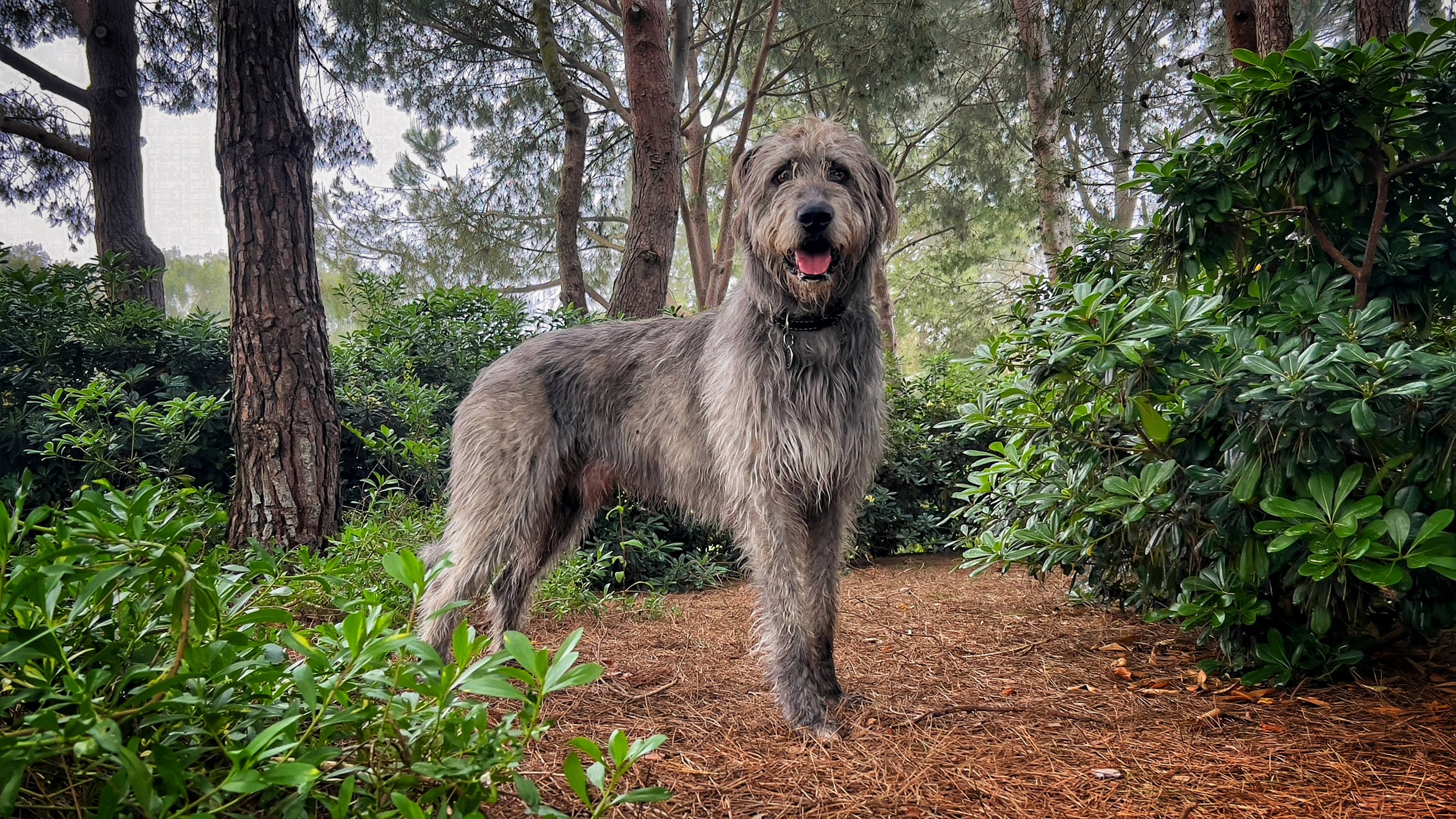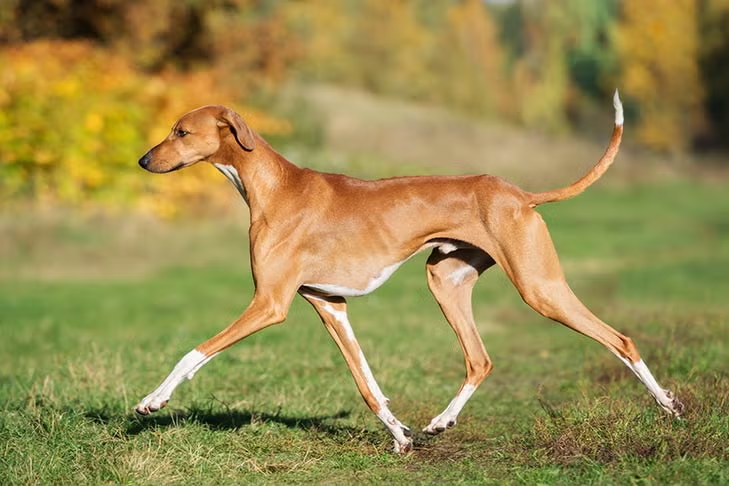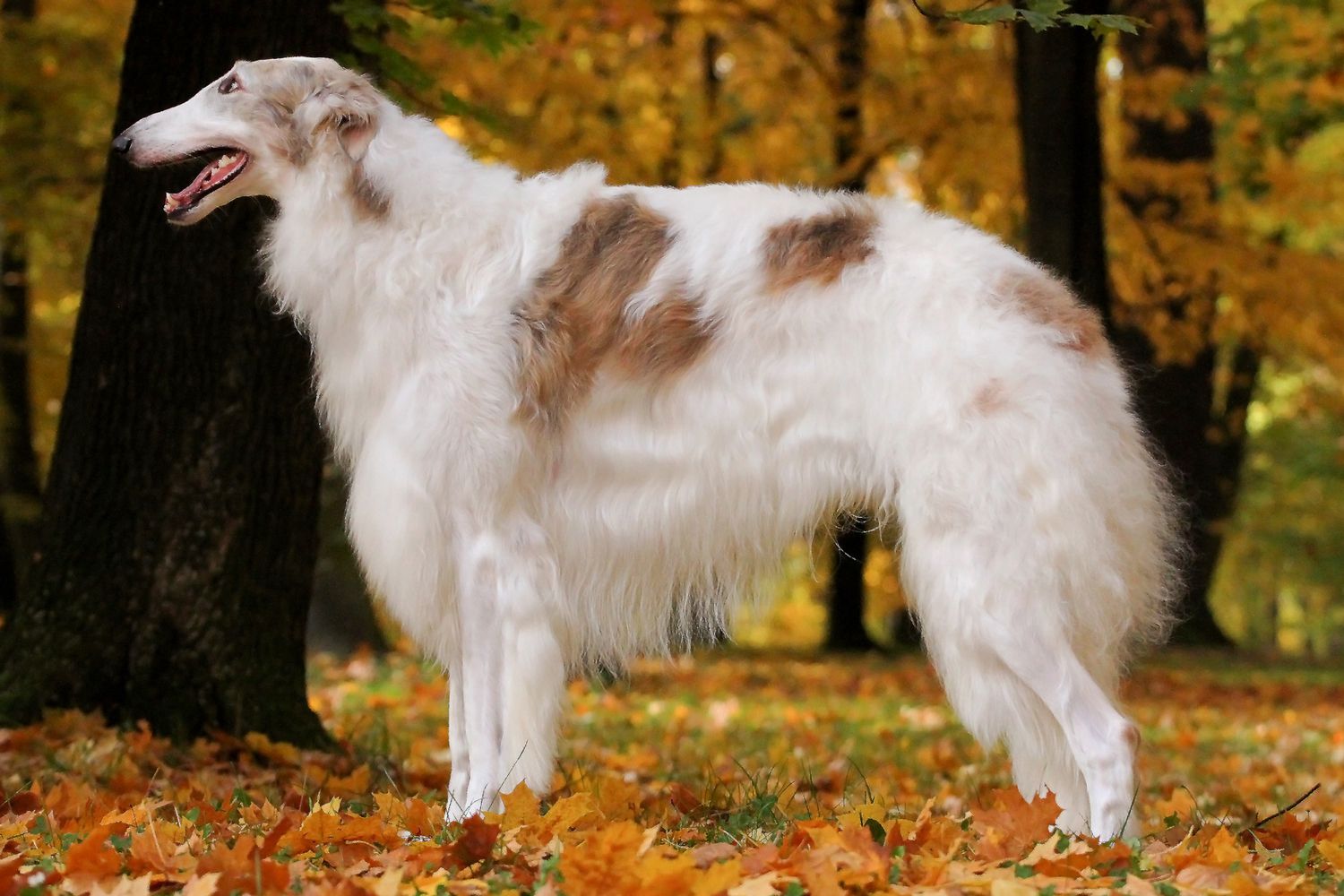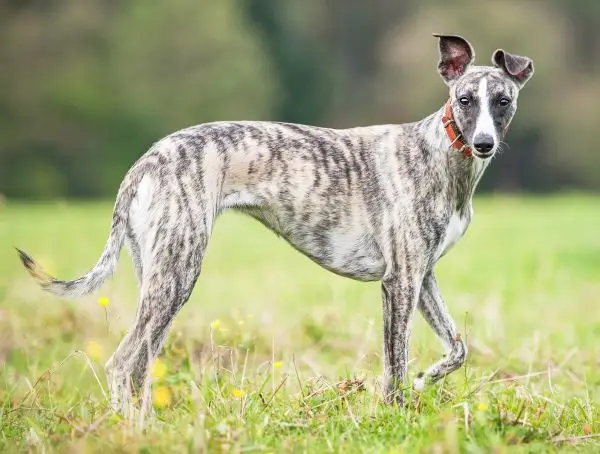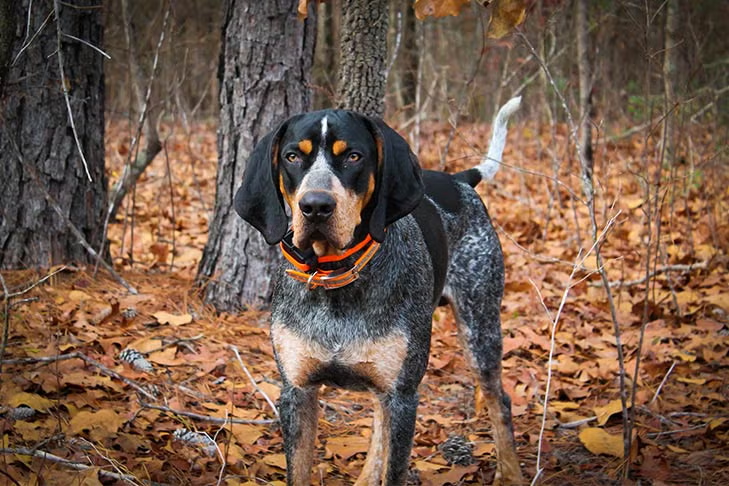My First Encounter with the Magnificent Irish Wolfhound
The first time I saw an Irish Wolfhound in person, I genuinely thought it was some kind of optical illusion. I was at a dog-friendly café in Boston when this enormous, shaggy creature walked in beside his owner. Even on all fours, his head was level with his owner’s hip, and when he briefly stood up to greet someone, he was nearly as tall as the person he was saying hello to. What struck me most, though, wasn’t just his incredible size – it was the gentleness in his eyes and the calm, dignified way he carried himself. This wasn’t just a big dog; this was a gentle giant straight out of Celtic legend.
Later, when I gathered the courage to approach his owner, I learned this magnificent boy was named Finn, a four-year-old Irish Wolfhound who, despite his imposing size, thought he was a lapdog and was afraid of the family cat. “Everyone thinks they’re getting a fierce warrior when they get a Wolfhound,” his owner told me with a laugh, “but what you actually get is the world’s biggest couch potato with the heart of a lamb.” By the end of our conversation, I was completely fascinated by these enormous yet gentle creatures with their ancient heritage and unique personalities.
If you’ve only ever seen Irish Wolfhounds in photos (or perhaps in Game of Thrones), you’re missing out on the full impact of their presence. Officially the tallest breed recognized by the American Kennel Club, these dogs aren’t just physically imposing – they carry with them thousands of years of history, from hunting wolves in ancient Ireland to serving as companions to Celtic chieftains and kings.
Whether you’re considering adding one of these gentle giants to your family, fascinated by their incredible history, or simply curious about distinctive dog breeds, I’ve put together the ultimate guide to Irish Wolfhounds. From their ancient Celtic heritage to what they’re actually like as companions (spoiler alert: they’re amazing!), we’ll cover everything you need to know about these extraordinary dogs. So grab your favorite beverage, get comfortable, and let’s explore the wonderful world of Irish Wolfhounds!
Ancient Celtic Heritage: The 2,000-Year History of Irish Wolfhounds
To truly understand what makes Irish Wolfhounds so special, we need to appreciate their extraordinary history, which stretches back thousands of years and has shaped every aspect of these remarkable animals.
Origins in Ancient Ireland
The Irish Wolfhound is one of the oldest recorded dog breeds, with references dating back to pre-Christian Ireland. Roman records from the 1st century CE mention these “big rough greyhounds” that were already well-established in Ireland and used for hunting wolves, elk, and even bear.
These impressive hounds were highly valued in early Celtic society, so much so that they feature prominently in ancient Irish mythology and literature. The legendary Irish hero Cúchulainn was originally named Setanta but earned the name Cúchulainn (meaning “the hound of Culann”) after killing a fierce guard dog and offering to take its place until a replacement could be reared.
Irish law texts from the early medieval period suggest that only kings and nobles were permitted to own Irish Wolfhounds, with the number of hounds one could own directly tied to one’s status in society. These dogs weren’t just hunters but symbols of wealth, power, and prestige – often given as royal gifts to foreign dignitaries and monarchs.
Near Extinction and Revival
By the late 18th century, the Irish Wolfhound faced a serious threat of extinction. The wolves they were bred to hunt had been eradicated from Ireland, diminishing their primary purpose. Additionally, exports of these prized dogs to foreign royal courts, combined with the economic hardships facing Ireland, drastically reduced their numbers.
The breed’s revival is largely credited to Captain George Augustus Graham, a Scottish officer with a passion for dogs. In the 1860s, Graham began a dedicated breeding program to resurrect the Irish Wolfhound. He gathered the few remaining dogs with true Irish Wolfhound heritage and carefully crossed them with Scottish Deerhounds, Great Danes, and Borzois to reestablish the breed’s size and type while maintaining its ancient character.
Thanks to Graham’s efforts, the Irish Wolfhound began to flourish once again. The Irish Wolfhound Club was formed in 1885, and the American Kennel Club recognized the breed in 1897. While today’s Irish Wolfhound may not be genetically identical to its ancient ancestors, careful breeding has produced a dog that closely resembles historical descriptions and artwork depicting these legendary hounds.
From Wolf Hunter to Beloved Companion
Throughout their long history, Irish Wolfhounds have transitioned from fearsome hunters to beloved companions. While they no longer hunt wolves (which have been extinct in Ireland since the 18th century), they’ve maintained the physical attributes and temperament that made them successful in their original role.
Modern Irish Wolfhounds serve primarily as family companions, though some also participate in lure coursing, obedience, and therapy work. Their gentle, patient nature makes them excellent therapy dogs despite their intimidating size, and many visit hospitals and nursing homes where their calm presence brings comfort to patients.
The breed remains a powerful symbol of Irish heritage and is featured on Irish coins, stamps, and as the logo of many Irish organizations. In fact, the Irish Wolfhound has been used as a regimental mascot for Irish military units and holds a special place in Irish cultural identity.
The Irish Wolfhound Look: Impressive Size and Gentle Expression
The Irish Wolfhound’s appearance is truly awe-inspiring – combining great size with an athletic build and a distinctive shaggy coat that gives them a rugged, natural look reflecting their ancient heritage.
Size and Structure
Irish Wolfhounds are officially the tallest dog breed recognized by the American Kennel Club. Males typically stand at least 32 inches at the shoulder and weigh between 120-180 pounds, while females stand at least 30 inches and weigh around 105-140 pounds. Many exceed these minimums, with some males reaching heights of 36-38 inches!
Despite their enormous size, Irish Wolfhounds have a graceful, well-balanced appearance. Their overall silhouette resembles that of a large, rough-coated Greyhound, combining strength with speed and agility. Key physical characteristics include:
- A long head with a slightly domed skull and medium-length muzzle
- Small ears that fold back against the neck in repose but raise when alert
- Dark, medium-sized eyes with a gentle, intelligent expression
- A long, arched neck flowing into well-laid-back shoulders
- A deep chest that provides ample lung capacity
- A back that rises to the loins and then slopes gently to the tail
- Long, straight legs with good bone and muscle
- A long tail carried low with a slight upward curve at the end
Their movement is surprisingly smooth and effortless for such a large dog, with a free-flowing stride that covers ground efficiently. When running at speed, Irish Wolfhounds display the double-suspension gallop characteristic of sighthounds, where all four feet leave the ground twice in each stride cycle.
Coat and Colors
The Irish Wolfhound’s coat is one of its most distinctive features – rough and hard to the touch on the body, legs, and head, with especially long, wiry hair above the eyes and under the jaw forming a characteristic rough eyebrows and beard. This harsh, weather-resistant coat served a practical purpose, protecting them from the harsh elements of the Irish climate during long hunts.
Irish Wolfhounds come in several accepted colors, including:
- Gray (the most common color, ranging from silver to dark slate)
- Brindle (tiger-striped pattern)
- Red
- Black
- Pure white (less common)
- Fawn
Many Irish Wolfhounds have white markings on the chest, feet, or tail tip. Some have a dark mask on their face. All colors and markings are considered equally acceptable in the breed standard.
While their coat looks like it might require extensive maintenance, Irish Wolfhounds are surprisingly easy to groom. Most require brushing once or twice weekly to remove loose hair and prevent matting, with occasional hand-stripping to remove dead hair and maintain the proper harsh texture. Their natural coat shouldn’t be clipped or scissored for show purposes, though some pet owners opt for trimming in hot weather or for easier maintenance.
Personality & Temperament: The Gentle Giant’s Heart
Perhaps the most remarkable thing about Irish Wolfhounds is the contrast between their imposing physical presence and their incredibly gentle, sweet-natured personalities. These dogs truly embody the phrase “gentle giant” in every sense.
The Calm, Kind Soul
Irish Wolfhounds are known for their exceptionally gentle temperament. Despite their historic role as fierce hunters, today’s Wolfhounds are typically calm, dignified, and exceptionally patient. They tend to approach life with a serene, almost philosophical attitude that seems at odds with their enormous size.
With family members, Irish Wolfhounds are affectionate without being demanding. They enjoy being near their people and will often quietly follow them from room to room, content to simply be in their presence. While not as demonstrative as some breeds, they form deep bonds with their families and show their affection through quiet companionship and gentle interaction.
One of the most endearing traits of Irish Wolfhounds is their patience with children. Despite their size, most are incredibly gentle with kids, seeming to understand their own strength and adjusting their behavior accordingly. Of course, due to their sheer size, interactions between young children and Wolfhounds should always be supervised – an accidental bump from such a large dog could easily knock over a small child even with no aggressive intent.
Intelligence and Trainability
Irish Wolfhounds possess a quiet intelligence that’s sometimes overlooked. They’re thoughtful dogs who consider situations before acting, rather than responding impulsively. This reflective nature means they learn household rules quickly and generally aim to please their people, though they may put their own interpretation on commands.
Their training approach should match their gentle nature – Irish Wolfhounds respond best to positive, reward-based methods and can be sensitive to harsh corrections or criticism. They’re not typically stubborn in the way some independent breeds are, but they do appreciate understanding the purpose behind commands rather than performing repetitive drills.
Most Irish Wolfhounds excel at basic obedience and can learn good house manners easily, though their size presents some unique training challenges. Teaching them not to lean on people, jump up, or pull on the leash is essential given their weight and height. Early leash training is particularly important, as a full-grown Wolfhound who hasn’t learned good leash manners can be difficult to control even for strong adults.
Social Nature and Guard Dog Potential
Despite their imposing size, Irish Wolfhounds make terrible guard dogs in the traditional sense. Most are friendly and welcoming to visitors, greeting strangers with a calm, gentle demeanor rather than suspicion or aggression. While their size alone might deter some potential intruders, these dogs typically lack the territorial or protective instincts that make effective guard dogs.
That said, Irish Wolfhounds are generally courageous and will intervene if they perceive a genuine threat to their family. There are many anecdotal stories of normally placid Wolfhounds stepping between their owners and perceived danger, using their size as a deterrent rather than showing aggression.
With other dogs, most Irish Wolfhounds are social and non-confrontational. They typically get along well with other dogs in the household, particularly when raised together. Some may have a prey drive toward very small dogs due to their hunting heritage, though this varies widely between individuals and can be managed with proper socialization.
Living With an Irish Wolfhound: Practical Considerations
Beyond their charming personalities and impressive appearance, what’s it actually like to share your home with an Irish Wolfhound? There are some practical considerations that potential owners should understand before bringing one of these gentle giants home.
Space and Accommodation Needs
The most obvious consideration for potential Irish Wolfhound owners is space. While these dogs don’t need excessive room to run indoors, their sheer size means they take up significant physical space in a home. A full-grown Wolfhound can easily rest their head on kitchen counters and dining tables without stretching, and their tail can clear coffee tables with a single wag!
Contrary to what many expect, Irish Wolfhounds don’t necessarily need a large yard to be happy. They’re relatively inactive indoors and many adapt well to apartment living provided they receive adequate daily exercise. What they do need is comfortable resting space – a standard dog bed won’t suffice for a dog of this size. Many owners provide large orthopedic mattresses or even twin-sized human mattresses to give their Wolfhounds adequate comfortable space.
Car transportation presents another space challenge. Most Irish Wolfhounds cannot comfortably fit in standard sedans and require an SUV, van, or station wagon with the rear seats folded down. This is an important practical consideration for everything from vet visits to family vacations.
Exercise and Activity Levels
Despite their size and historic role as hunting dogs, adult Irish Wolfhounds have moderate exercise needs. They typically enjoy 30-60 minutes of activity daily, ideally including some off-leash time in a securely fenced area where they can stretch their legs with short bursts of running.
Young Wolfhounds (under two years) generally have higher energy levels than adults but should have their exercise carefully managed to protect developing joints and bones. Forced running, jumping, or stair climbing should be minimized during the growth period, which in this giant breed can continue until 18-24 months of age.
The exercise pattern of most Irish Wolfhounds follows their sighthound heritage – brief periods of high energy followed by long periods of rest. Many owners describe their adult Wolfhounds as “couch potatoes” who are perfectly content to lounge around the house for hours after their daily walk or play session.
Activities that many Irish Wolfhounds enjoy include:
- Leisurely walks (though training for good leash manners is essential)
- Off-leash running in secure areas
- Lure coursing (though competitive coursing should wait until physical maturity)
- Interactive play with their humans
- Nose work or tracking activities
Health Considerations and Lifespan
Perhaps the most significant drawback to Irish Wolfhound ownership is their relatively short lifespan. As with many giant breeds, Wolfhounds typically live just 6-8 years, though some may reach 10 or occasionally even 12 years of age. This shorter-than-average canine lifespan is heartbreaking for those who love the breed and is an important emotional consideration for potential owners.
Irish Wolfhounds are prone to several health issues common in giant breeds:
- Dilated cardiomyopathy (DCM) and other heart conditions
- Osteosarcoma (bone cancer)
- Gastric torsion/bloat (GDV)
- Hip and elbow dysplasia
- Liver shunt
- Progressive retinal atrophy (PRA)
Working with a reputable breeder who conducts appropriate health testing can reduce the risk of these conditions. Regular veterinary care, including cardiac evaluations, is essential for monitoring health. Many owners opt for prophylactic gastropexy (surgical tacking of the stomach to prevent bloat) when their Wolfhounds are spayed or neutered.
The financial aspect of giant breed ownership is another practical consideration. Everything from food to medications to preventative care costs more for a dog of this size. Finding a veterinarian comfortable with handling giant breeds is also important, as some clinics aren’t equipped for dogs weighing 150+ pounds.
Feeding and Growth
Proper nutrition is crucial for Irish Wolfhounds, particularly during their extended growth period. These dogs grow at an astonishing rate – puppies often gain 3-5 pounds per week during peak growth phases – and proper feeding helps ensure healthy development of their massive frames.
Most experts recommend feeding Irish Wolfhound puppies a large-breed puppy food or an all-life-stages food appropriate for large breeds. These formulations provide balanced nutrition with appropriate calcium/phosphorus ratios to support healthy bone development without encouraging too-rapid growth, which can contribute to orthopedic problems.
Adult Irish Wolfhounds typically eat 4-8 cups of high-quality food daily, divided into at least two meals. Raised feeding stations are often recommended to reduce strain on the neck and to help minimize the risk of bloat. Many owners feed multiple smaller meals rather than one large one, again to reduce bloat risk.
Despite their size, Irish Wolfhounds should maintain a lean body condition – excess weight puts additional strain on their joints and heart. The outline of the last few ribs should be visible, and there should be a distinct “waist” when viewed from above.
Is an Irish Wolfhound Right for You? Honest Assessment
After learning all about these magnificent gentle giants, you might be wondering if an Irish Wolfhound would fit well in your lifestyle. Let’s take an honest look at who should (and perhaps shouldn’t) consider this breed.
You Might Be a Great Irish Wolfhound Owner If…
An Irish Wolfhound might be right for you if:
- You’re prepared for the emotional reality of a shorter lifespan (6-8 years on average)
- You can accommodate a very large dog in your home and vehicle
- You can provide regular, moderate exercise including some off-leash running in secure areas
- You’re financially prepared for higher costs of food, veterinary care, and supplies
- You appreciate a calm, gentle companion rather than a highly energetic or protective dog
- You’re home relatively often – Wolfhounds bond closely with their people and don’t like extended solitude
- You’re interested in a dog that’s affectionate but not overly demanding of attention
- You’re willing to work with the challenges of training and managing a giant breed
- You enjoy the reactions and conversations that come with having such a distinctive dog
Irish Wolfhounds can adapt to various household compositions, including families with well-behaved children, adult-only homes, and even apartments (provided they receive adequate exercise). They often do well with other dogs and can learn to live peacefully with cats, especially when raised together.
A Different Breed Might Be Better If…
An Irish Wolfhound might not be the best choice if:
- You’re looking for a long-lived dog (sadly, giant breeds have shorter lifespans)
- You want a guard dog that will be protective or territorial
- You have limited space in your home or vehicle
- You’re away from home for extended periods regularly
- You have very young or unsteady children who could be accidentally knocked over
- You’re not prepared for the financial commitment of a giant breed
- You want a dog that’s easily transportable for travel
- You prefer a highly trainable dog for competitive obedience or complex tasks
- You’re not willing to accept some drool, shedding, and the occasional knocked-over item
Finding Your Irish Wolfhound
If you decide an Irish Wolfhound is right for you, there are several paths to finding your perfect gentle giant:
- Reputable breeders: The Irish Wolfhound Club of America maintains a breeder directory. Expect a thorough interview process – good breeders want to ensure their puppies go to prepared, appropriate homes. Puppies from health-tested parents typically cost between $1,800-$3,000.
- Breed-specific rescue: The IWCA also operates a rescue network for Wolfhounds in need of homes. While less common in rescue than some breeds, adult Wolfhounds occasionally need rehoming due to owner circumstances rather than behavioral issues.
- General giant breed rescues: Some organizations specialize in rescue and placement of giant breeds, occasionally including Irish Wolfhounds.
Be prepared for a potential wait, especially if you’re seeking a puppy from a reputable breeder. The best breeders often have waiting lists and breed only when they have homes lined up for all puppies.
Conclusion: The Extraordinary Joy of Irish Wolfhound Companionship
There’s something truly magical about sharing your life with an Irish Wolfhound. Perhaps it’s their connection to ancient Celtic history, evoking images of misty Irish landscapes and legendary heroes. Perhaps it’s their extraordinary physical presence – the gentle giant sleeping on your couch with legs dangling off the edge, or the noble silhouette walking beside you that never fails to turn heads. Or perhaps it’s their unique combination of great size and greater gentleness – these enormous dogs with hearts to match.
Living with an Irish Wolfhound means embracing certain realities – the shorter lifespan, the physical space they require, the financial commitment, and yes, the occasional knocked-over lamp or coffee cup swept off the table by a wagging tail. But ask any Wolfhound owner if it’s worth it, and the answer is invariably yes.
These dogs bring a special presence to a home – a calm dignity combined with moments of goofy playfulness, a quiet companionship that doesn’t demand constant attention, and a gentle affection that belies their imposing size. There’s a reason Irish Wolfhounds inspire such devotion in those who know the breed, often creating “Wolfhound people” who can’t imagine life without one of these gentle giants by their side.
If you decide to welcome an Irish Wolfhound into your heart and home, prepare for a relationship unlike any other – briefer than we would wish, but filled with moments of joy, laughter, and the extraordinary privilege of companionship with a living link to ancient Celtic heritage. As an old Irish blessing says: “May you have the hindsight to know where you’ve been, the foresight to know where you’re going, and the insight to know when you’re going too far.” With an Irish Wolfhound by your side, that journey – however long or short – will certainly be a memorable one.
